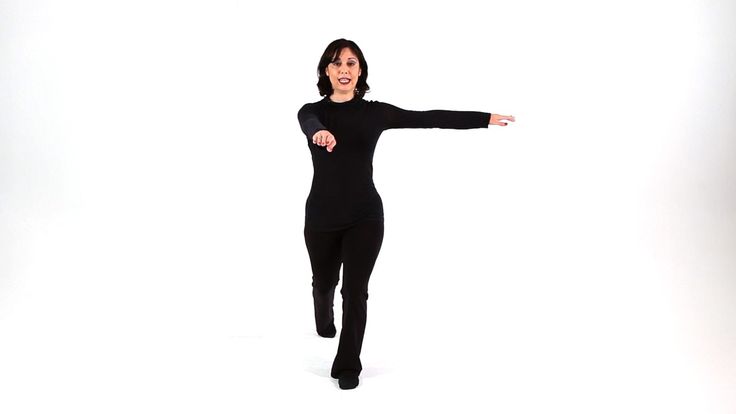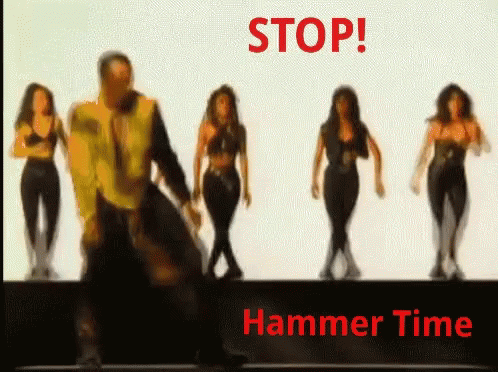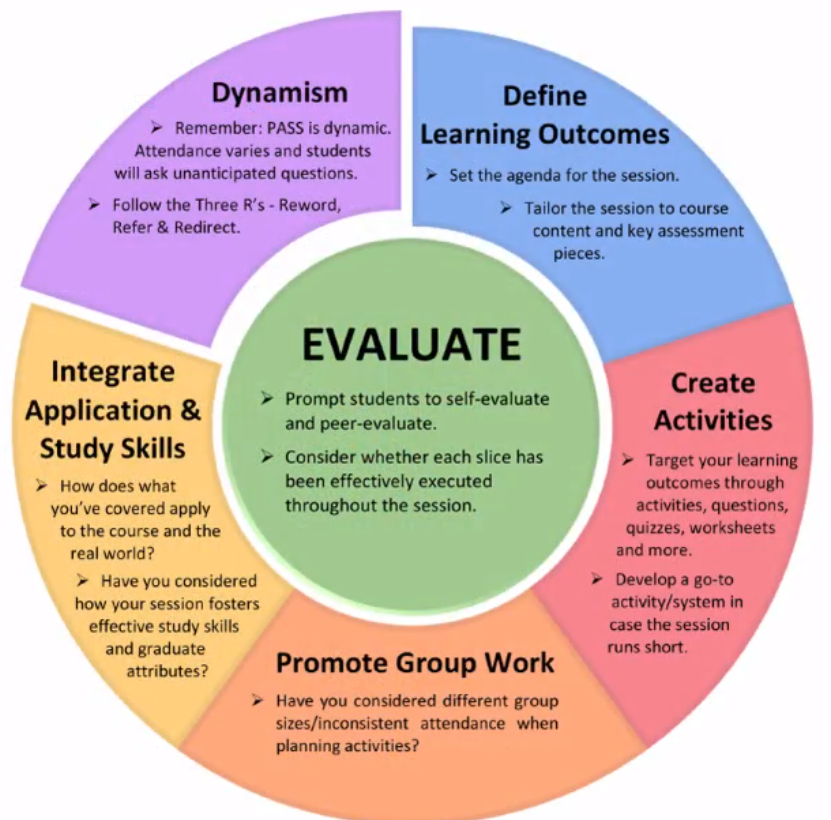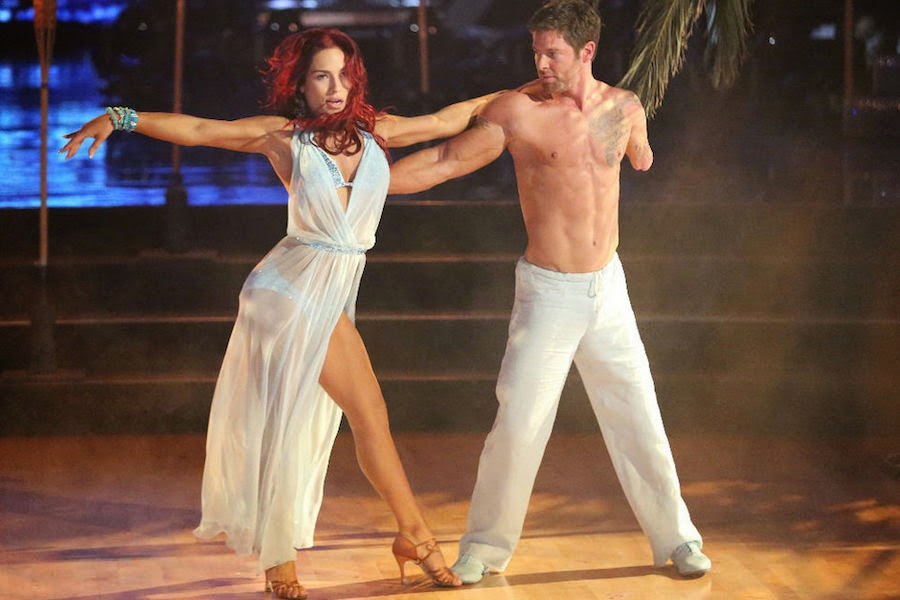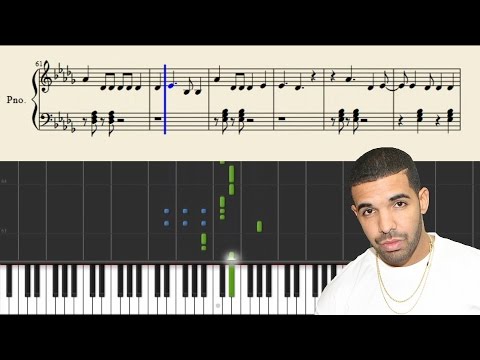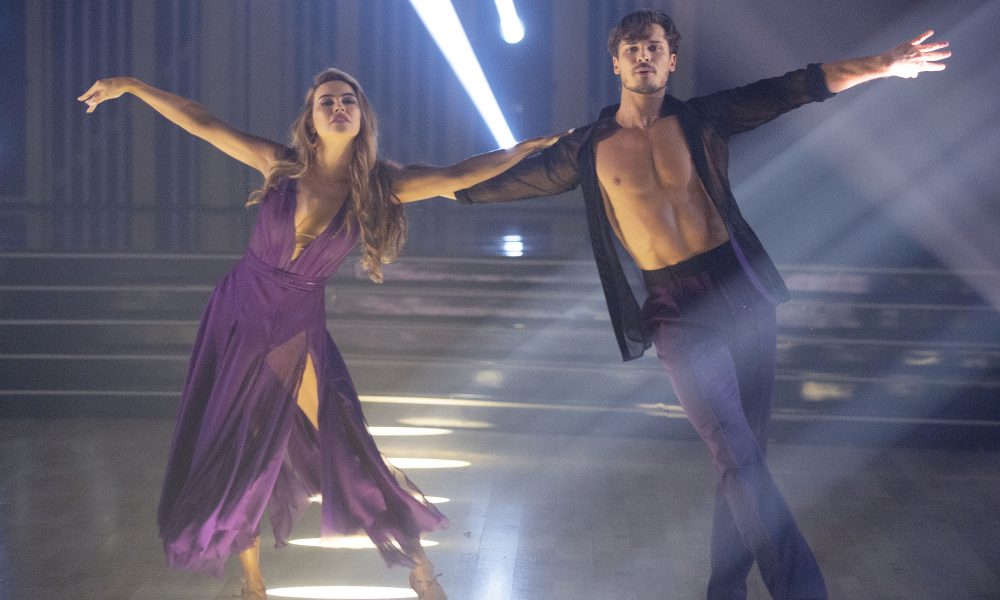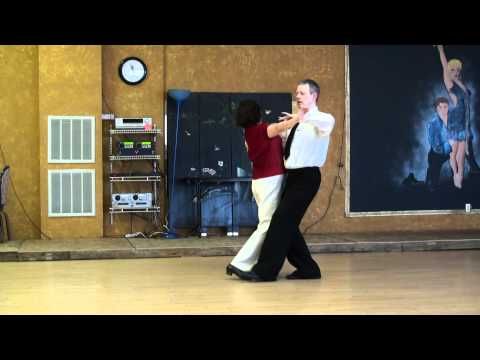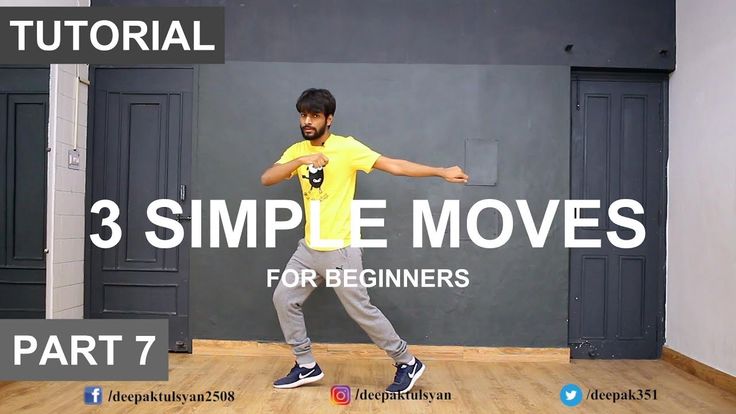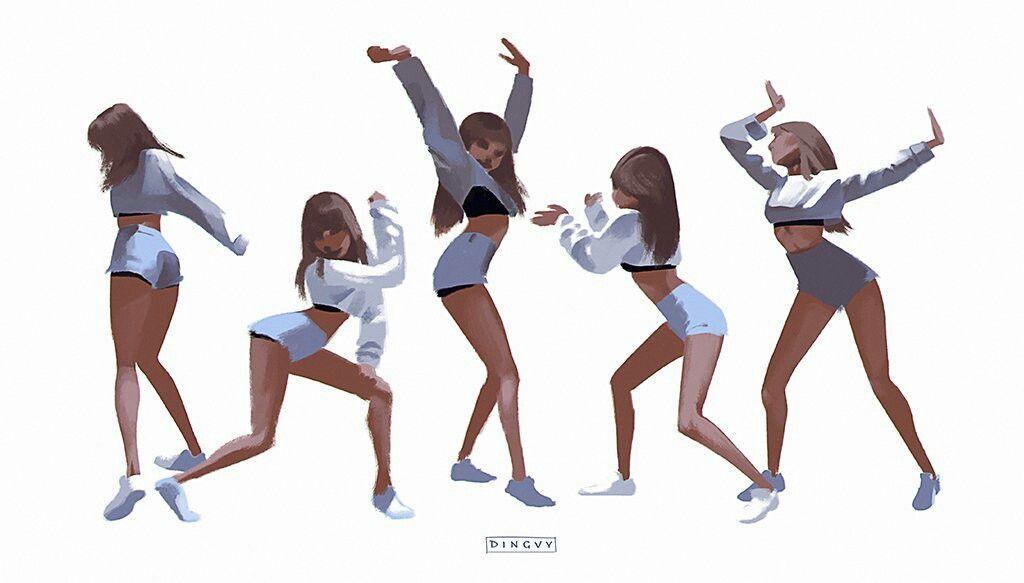How to dance jazz
How Do You Dance to Jazz? | Arts & Culture
Revelers two-step at the New Orleans Jazz & Heritage Festival. Zack SmithCan you dance to jazz? The crowds at this year’s New Orleans Jazz & Heritage Festival thought so, twirling in the aisles of the big canvas tents and couple-dancing on a plywood riser to acoustic jazz combos.
In 1945, this would not have been a remarkable observation, for 70 years ago, jazz was still a popular dance music. In 2015, however, jazz is almost always a sit-down concert experience—either in nightclubs where listeners sit at tables sipping overpriced drinks or in theaters where they sit in rows, checking the personnel in their glossy programs. That’s why it was such a surprising pleasure to see jazz fans in New Orleans jump out of their chairs at the slightest provocation to swing their hips.
But this music wasn’t like today’s pop dance music, where the beat is pumped up to industrial proportions so it becomes unmistakable. On these tunes, the beat might be buried beneath a trumpet or piano solo pulling in another direction while the guitar plays a counter-rhythm. So how do the dancers find the pulse? I asked the best dancer on the plywood riser, a retired New Orleans grocer named Claudia Dumestre.
“I listen with both my ears right down to my feet,” she said. “Sometimes I lock on the drummer to find the beat; sometimes I lock in on another instrument. If you have a dance partner who hears music the same way, that makes it much easier. I’ve danced to Earl Turbinton and Willie Tee, a New Orleans group that could sound like John Coltrane, and if you have the right partner, you can dance to that too. The key is finding the pulse underneath everything else that's going on.”
This short, wiry woman in the black straw hat and floral jacket then demonstrated what she meant by grabbing my hand and pulling me onto the dance floor. Soon she was spinning beneath my upraised right arm, flinging me out and yanking me back.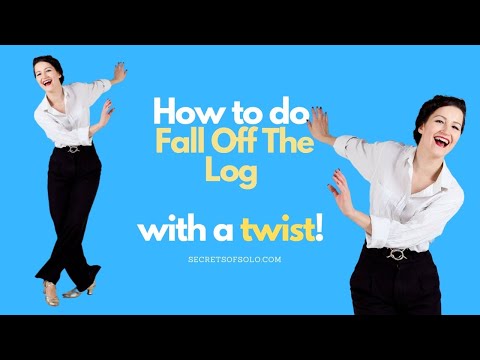 I noticed that while her hips were moving to the primary beat coming from the drums, her elbows and shoulders were moving to the secondary beats suggested by the horns.
I noticed that while her hips were moving to the primary beat coming from the drums, her elbows and shoulders were moving to the secondary beats suggested by the horns.
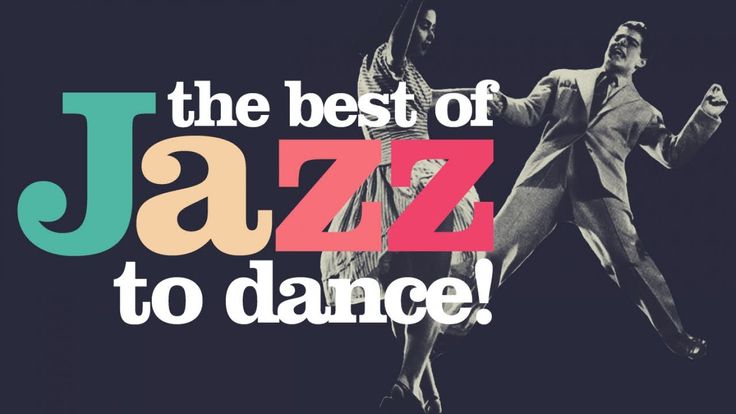 Zack Smith
Zack Smith “The other stuff that’s going on in a jazz tune is not distracting,” she explained when I asked. “It makes it more fun. If you can latch onto a secondary beat, you’re not doing the same thing over and over again. Jazz frees you up from that. Some people like to do the same swing step they learned from a dance instructor again and again, but it’s more enjoyable to always be moving from one movement to the next.”
“It’s all about the two and four,” said one of those dancers, New Orleans resident Shea Manly. “For me, everything else is icing on the cake. If I can find the two and four, I can dance to it. New Orleans is all about that rhythm.”
Manly's comment suggests that for jazz to become danceable again, it needs not only the right musicians but also the right venues and the right audiences. Yes, the musicians have to keep an underlying dance pulse going if they want listeners to get out of their chairs and shake their hips. But the venue also has to provide an open space where that can happen without blocking the view of others. And the audience has to be able to identify the beat within a jazz number that has a lot of different moving parts. In New Orleans, audiences are trained by family and friends to hear that dance pulse from an early age.
But the venue also has to provide an open space where that can happen without blocking the view of others. And the audience has to be able to identify the beat within a jazz number that has a lot of different moving parts. In New Orleans, audiences are trained by family and friends to hear that dance pulse from an early age.
“We are a very parochial people,” said Keith Hurtt, a New Orleans tour guide, “and we have our own ways of doing things. When we hear the beat, we can’t help ourselves. I’m always amazed that people from somewhere else can sit through a jazz tune. I don’t know how you cannot dance to jazz. Some people from other towns will have taken dance lessons, so they know all the steps, but it’s not the same, because they do the same steps even when the music changes.”
Nothing has done more to preserve the New Orleans tradition of dancing to jazz than the brass-band revival that began with the Dirty Dozen Brass Band and the ReBirth Brass Band in the 1980s and is still going strong today. Employing the instrumentation of a marching band in one of the city's countless parades, these groups relied solely on horns and strap-on drums to create chords and rhythms. With the tuba bleating out the bottom bass notes and the trumpets, trombones and saxophones forming the harmonies, these groups hit the sweet spot between groove and improvisation.
Employing the instrumentation of a marching band in one of the city's countless parades, these groups relied solely on horns and strap-on drums to create chords and rhythms. With the tuba bleating out the bottom bass notes and the trumpets, trombones and saxophones forming the harmonies, these groups hit the sweet spot between groove and improvisation.
Those two founding groups were at this year’s Jazzfest, of course, but so were excellent but lesser known bands such as the High Steppers Brass Band and the Soul Rebels, who played the smaller outdoor stages on Friday and Saturday respectively. These two bands were good examples of how you can keep people dancing even during the freest jazz solo if one part of the band takes care of the groove while another part is improvising—though the musicians often swap those roles. Nor were they staunch traditionalists; both bands employed hip-hop chants and commentary to keep the dancers engaged without taking over the music nor getting in the way of the soloists.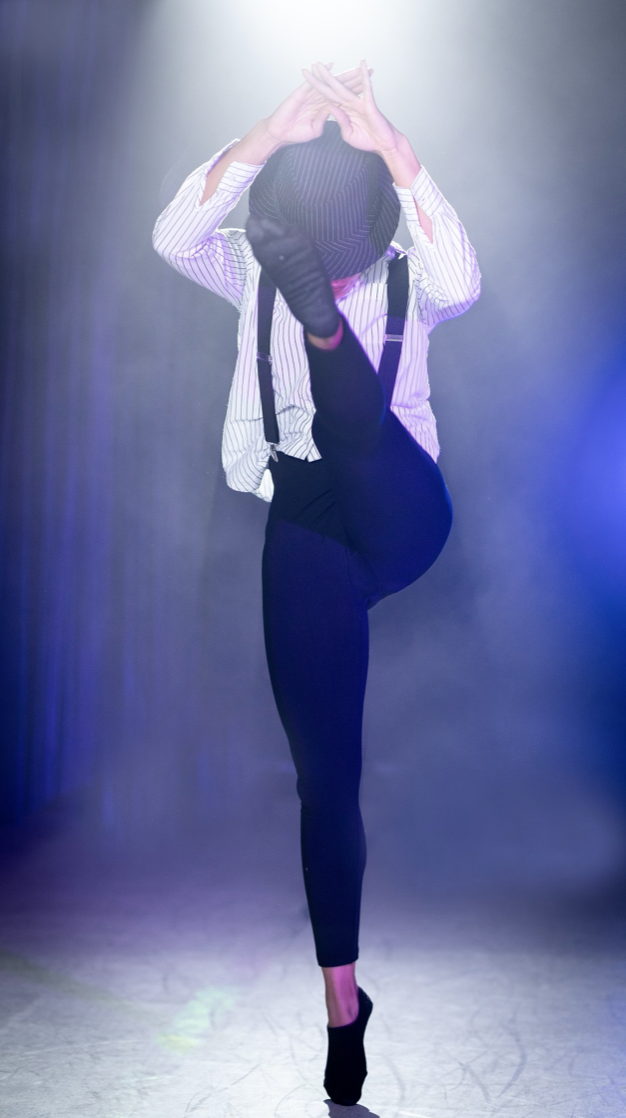
The Soul Rebels divided their band in two: the two trumpets, two trombones and saxophone formed the frontline, while the tuba and three drummers made up the backline. While the backline held down the beat, the frontline could play ambitious jazz solos, and the dancers would keep moving out on the grass. And sometimes, just to mix it up, the frontline would adopt a rhythmic horn vamp while the backline went into a wild percussion jam.
“[Clarinetist and frequent Wynton Marsalis collaborator] Michael White once told me, ‘I can hear my music and I can feel my music,’ but I can’t see my music till people start dancing.’” Dumestre said, “That made me feel so good, like I was helping to complete the music in some way by dancing.”
But why is New Orleans is so different from other cities? I got a clue when I visited the festival's big Gospel Tent to hear Cynthia Girtley, the self-described “New Orleans Gospel Diva.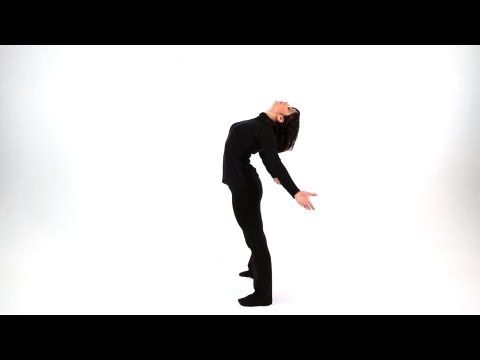 ” Sitting at the piano, she informed the Sunday-afternoon audience: “We’re gonna have church today. When we have church in New Orleans, we don’t sit down. We stand up and shout; we stomp and clap.”
” Sitting at the piano, she informed the Sunday-afternoon audience: “We’re gonna have church today. When we have church in New Orleans, we don’t sit down. We stand up and shout; we stomp and clap.”
When she sang “Jesus on the Mainline” to the tune of “This Little Light of Mine,” the crowd demonstrated what she meant. One by one they stood up and began stomping and clapping, swinging and singing. And they didn’t stop when Michael White himself took a jazz solo on the melody. And from his barstool on stage, he could look out into the audience and see what his music looked like.
Recommended Videos
Jazz Dance Terminology – CLI Studios
July 15, 2021 March 7, 2022 / 3 minutes of reading
Like any genre of dance, Jazz dance has its own terminology which is sometimes specific to itself – but often shared with other styles of dance. Here are a few of the more commonly used terms to get you started in your understanding of the style.
Axel Turn
A spinning rotation in which the dancer performs a knee bend and kick in the air before bringing the legs together again on the ground.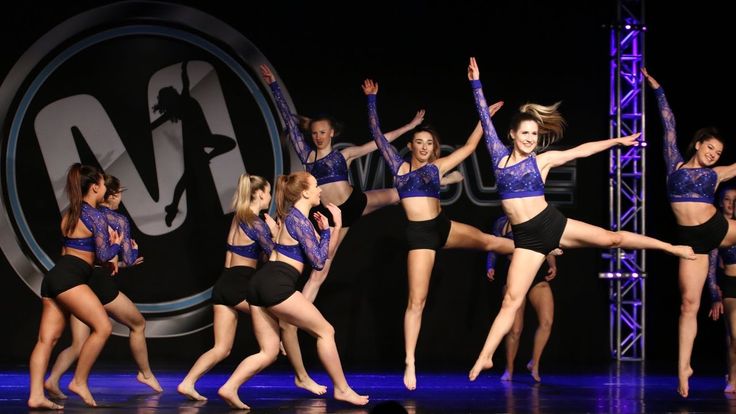
Ball Change
A basic move found in most forms of modern dance, a ball change is a transfer of weight from one foot to the other, often performed quickly. The “ball” refers to the ball of the foot, which is the thick muscular pad just below the toes.
Barrel Turn
A spin that is executed by putting a leg forward, kicking off that forward leg, and using the outstretched arms as a means of gathering momentum for the spin. A barrel turn requires tight coordination between the feet and the arms for its success.
Charleston
A popular dance from the early days of jazz and swing, the Charleston has at its core a front-to-back weight shift accompanied by a forward kick, often performed with a partner and with arm motions and sometimes jazz hands.
Chassé
Borrowed from ballet, a chassé–from the French meaning, “to chase”– is a kicking forward motion where one leg “chases” the other. Often performed with arms forward or overhead, a chassé is a good set-up step for a leap.
Fan Kick
Requiring a great degree of flexibility, a fan kick is where one leg travels in a circular motion from in front of the other leg, up into the air at the full range of motion, over the head, and finally down in a resting position. It is named after its imitation of an opening hand fan.
Jazz Hands
A highly stylized and exaggerated splaying of the fingers on open, extended palms. Used to convey rhythm and feeling, very popular in Broadway productions.
Jazz Square
A version of a box step where the dancer creates a square on the ground using a four-step sequence that imitates walking without any forward movement beyond the fourth step. Usually performed as side, back, side, forward.
Jazz Walk
A forward-moving strut, the jazz walk is meant to convey a cool image, and to give the dancer a sultry and slinky gait when in motion.
Stag Leap
A high forward leap in which the dancer imitates the actions of a male deer, with arms up and the knees bent like a prancing animal.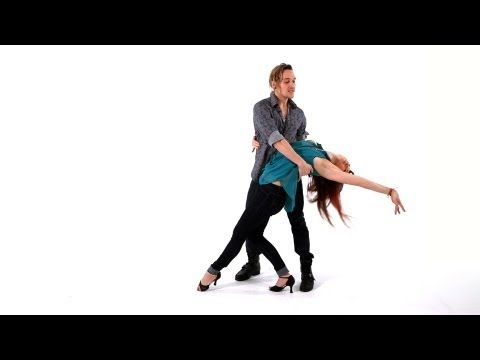
Lindy Hop
A mixture of preceding jazz dances like the Charleston, as well as tap dance, the Lindy Hop (named after aviator Charles Lindburgh’s groundbreaking 1927 transatlantic flight) is a partnered dance that serves as the centerpiece of the swing dance style. It remains a popular dance because of its improvisational style and fun, stylized movements.
How it is to dance jazz – Divoche.Media
Olya Smirnova, one of the founders and ideological inspirers of the show “The Age of Jazz”, tells how it is to dance authentic jazz, make performances in the chorus line style and organize a whole show about the 30s.
About myself and swing
There are two main activities in my life: children's book illustration and jazz dancing. I chose to do only what inspires me and gives me energy. I started to get involved in jazz music in 2009. At first I fell in love with rock and roll of the 50s and boogie-woogie dance - it is danced every Wednesday and Sunday in the summer at the Shell in the Mariinsky Park. Over time, she came to more complex music, including swing, and began to dive deeper into the culture of that time. nine0007 Swing is not just old jazz music for me. This is a rhythm, a special quality, attitude, communication through the body with music. Swing dances are social because they were created as a way to communicate. Instead of a constant partner, as in ballrooms, you dance with different people, find contact with music and another person at the same time.
I chose to do only what inspires me and gives me energy. I started to get involved in jazz music in 2009. At first I fell in love with rock and roll of the 50s and boogie-woogie dance - it is danced every Wednesday and Sunday in the summer at the Shell in the Mariinsky Park. Over time, she came to more complex music, including swing, and began to dive deeper into the culture of that time. nine0007 Swing is not just old jazz music for me. This is a rhythm, a special quality, attitude, communication through the body with music. Swing dances are social because they were created as a way to communicate. Instead of a constant partner, as in ballrooms, you dance with different people, find contact with music and another person at the same time.
About two thousand people practice swing in Kyiv. Plus a few more hundreds in Odessa, Lvov, Dnipro and Kharkov. Not as much as in salsa, but there is someone to dance with.
About vintage finds
For me, swing dances are not just movements, but a whole culture: music, lifestyle, American history of the 20-60s, fashion and much more.
I look for and wear vintage clothes and accessories, I use retro elements in the interior, I like to walk along the old streets, watch old films.
Some treasures inherited from my grandmother, such as a brooch and a bedside table, brought from the GDR in the 70s. On every trip I go to flea markets and vintage shops, but the most successful finds still happened in Kyiv at Lesnaya. In Europe, a real vintage is expensive, it is more appreciated there. nine0007
There is also a vintage shop "Vintage Crew" in Kyiv. His co-owner Nika danced with us in the first few programs. And since there are no former chorus girls, now Nika is almost always with us behind the scenes: helping with costumes and styling curls.
About the show
"Protagonists" show - chorus line. In the 1920s and 1940s, this was the name given to groups of girls who performed in nightclubs as an opening act for the main artists, dancing complex rhythms to fast music in beautiful outfits and throwing their legs high. nine0007 I was inspired to create a chorus line in Kyiv by Marie N'diaye, a dancer from Sweden, who every year gathers an international chorus line as part of the Herrang dance camp (the largest swing dance festival, held in Sweden for the past 38 years). I was lucky for the last four years to dance in her team every summer.
nine0007 I was inspired to create a chorus line in Kyiv by Marie N'diaye, a dancer from Sweden, who every year gathers an international chorus line as part of the Herrang dance camp (the largest swing dance festival, held in Sweden for the past 38 years). I was lucky for the last four years to dance in her team every summer.
The Age of Jazz show was born from a simple idea to make some dance routines accompanied by live music. Once, over a bottle of wine, this idea was transformed into the concept of a full-fledged show. nine0007 We asked the familiar musicians (backbone - the group "Hands in Trousers" and their friends) - how do they like this adventure. And they accepted and agreed! We found the missing instruments for the big band and started rehearsals.
We began to frantically learn the numbers, some of the productions for the first show were taken from Marie. And a miracle happened! The first show was followed by the second, then the third, the fifth… We began to come up with our own numbers, added more pairs, acquired props and costumes. For the past three years we have been doing a "naphthalene" show once every two or three months, gathering full houses, growing and do not want to stop. nine0007 The first show was risky - we didn't know much about behind the scenes work. Scenario, lighting, operators, runs - everything was learned on the go.
For the past three years we have been doing a "naphthalene" show once every two or three months, gathering full houses, growing and do not want to stop. nine0007 The first show was risky - we didn't know much about behind the scenes work. Scenario, lighting, operators, runs - everything was learned on the go.
Our girls are not professional artists, but rather enthusiasts. After the first show, in the comments to the photo, some man wrote that we all urgently need to go to the gym.
We looked at ourselves, laughed and realized that our imperfection is our strength - after all, we are simple girls of different shapes, heights and sizes. We are united by the love of swing, sisterhood, the desire to dance, feel the beat and rejoice. That's what jazz is all about, not waist size or how high you can swing your leg. nine0007
Now the show is more coherent and thoughtful than three years ago. Behind the two-hour concert that guests see on stage is the work of more than 30 people working solely for the love of dance and music of the Jazz Age. We are our own directors, screenwriters, PR people, stylists, choreographers, sound engineers, cameramen and everyone else.
We are our own directors, screenwriters, PR people, stylists, choreographers, sound engineers, cameramen and everyone else.
This is what our show is based on - well-coordinated work, self-organization and support. The Age of Jazz show gives me the feeling of a friendly shoulder, we are doing something cool together that we all like and how each of us lives. nine0003
About costumes
We need a new costume for each number, and the budget is very limited. From the idea to the implementation of the outfit, we go through many stages: euphoria, denial, acceptance, finding compromises in price and quality. Usually it is a lot of velvet, sequins, feathers and fringe.
Previously, they ordered a lot on AliExpress - cheap and brilliant, but such things are not only of poor quality, they also sit disgustingly, do not allow you to move normally. Now we try to sew most of the outfits from friends or ourselves. To do this, they gathered several times in a circle of cutting and sewing, built patterns, made patterns.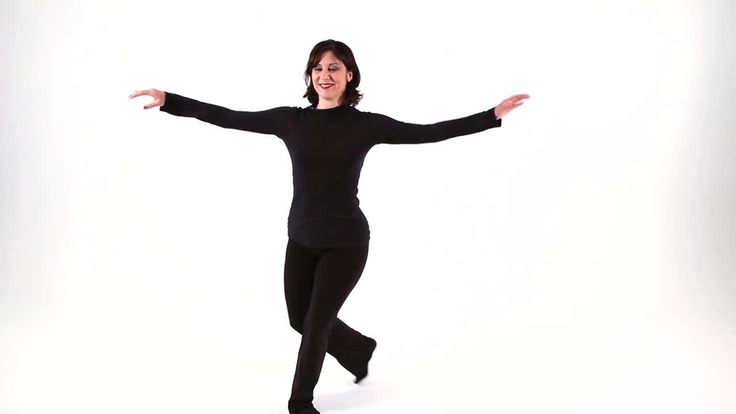 Excellent team building. nine0007 But even if we think over and make costumes in advance, there is always something to finish or glue on at the last moment. We always know what we'll do the night before the show. For example, on a costume in the style of Josephine Baker, I sewed 20 rows of gold fringe until two in the morning.
Excellent team building. nine0007 But even if we think over and make costumes in advance, there is always something to finish or glue on at the last moment. We always know what we'll do the night before the show. For example, on a costume in the style of Josephine Baker, I sewed 20 rows of gold fringe until two in the morning.
Everything is easier with shoes. We recently ordered golden shoes for everyone from the Ukrainian company Harlem Shoes. They are specially made for dancing, very comfortable and beautiful.
About dancing
There are jazz ballets in Kyiv. But swing, authentic, like 100 years ago - only one. Yes, we are not just a ballet. We are creating a whole world in which you can dive and get lost headlong for two hours. All members put a part of themselves into the show, so it can't be called a hobby. But it's not a normal job either. Rather love. nine0007 We don't follow fashion, the crowd's wants, we don't make Gatsby, gangsters and dudes. This approach has its drawbacks, of course. But it's important for us to do what we like, to keep the culture of swing alive.
But it's important for us to do what we like, to keep the culture of swing alive.
Modern jazz trends are more focused on form, lines, visual component. We dance with an emphasis on the inner state, searching for sensations of rhythm in the body and expressing it through movements, delving into the origins of dance and old videos.
Same suit with 20 rows of fringes
This does not mean that some jazz dance is correct and some is not. It's just that rhythm is more important to me than perfect lines, sensations are more important than splits. We're trying to get to the bottom of it, to understand why people danced like that when jazz was born.
About the girls in the team
Today we spend about 10 hours a week in the hall on general training in solo jazz, tap, mambo, lindy hop. Before the performance, of course, many times more. Plus, each of the girls is engaged in stretching, afro, yoga or other swing dances on their own.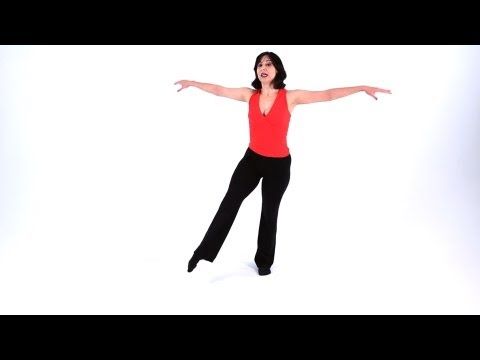 Most of us teach at dance schools in Kyiv or play/sing in bands. nine0007 At the same time, we cannot call ourselves "professional dancers" in the classical sense. We have not learned this since childhood, our body is not so prepared, most of us have a main job. But we are the only team in Ukraine that dances swing dances at such a high level.
Most of us teach at dance schools in Kyiv or play/sing in bands. nine0007 At the same time, we cannot call ourselves "professional dancers" in the classical sense. We have not learned this since childhood, our body is not so prepared, most of us have a main job. But we are the only team in Ukraine that dances swing dances at such a high level.
Marie from Sweden puts another idea into the chorus line, which is close to me too: it is a kind of women empowerment, an opportunity to express yourself through dance with the full support of sisters in spirit.
About ambitions
Now almost every European capital has its own chorus line, some even have more than one. Swing is played and danced a lot in Europe, the culture is reviving and attracting new people. Every weekend in large European cities dance parties and festivals with hundreds of guests are held.
We are the only ones in Kyiv - Shiny Stockings Chorus Line. We have few people who know about swing and listen to old jazz.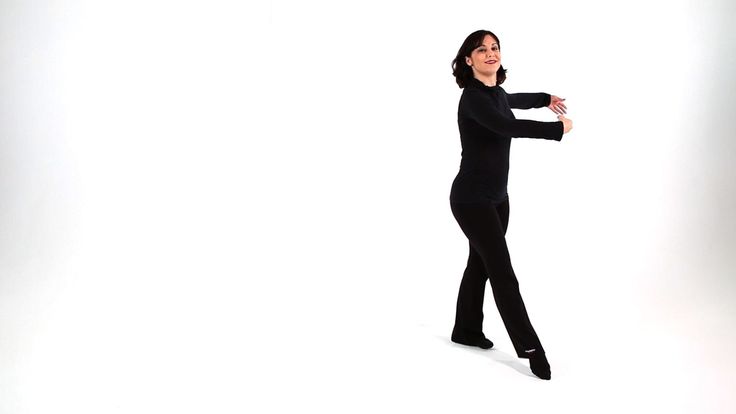 If someone plays it, one way or another, these are people associated with a dance party, where everyone knows each other. This music and dance cannot be called popular in Ukraine today, but we are actively working on it, and the show is our way to popularize jazz culture. nine0007
If someone plays it, one way or another, these are people associated with a dance party, where everyone knows each other. This music and dance cannot be called popular in Ukraine today, but we are actively working on it, and the show is our way to popularize jazz culture. nine0007
It would be great to go on tour abroad, or at least drive around Ukraine more, but this idea is still difficult to implement. Now we are looking for sponsors and a producer to show the show to as many people as possible.
The nearest concert is March 1: we will show an updated program, already loved by the public and completely new numbers. In two hours, through music and dance, we will tell the story of the formation of jazz from the beginning to the 40s with complete immersion, magic and sparkles. This is what we can do. nine0003
We are overwhelmed with independent and honest women for the past 7 years. On the vіdmіnu vіd rich women's sites, we pragnemo vіdverto talk about women and give a platform for different voices, like rozpovidat about the right life, the real problems of women, their needs, fears, hopes, about their dosvіd, success in that achievement. The skin is meritorious for us but respected. Skin from us can be butt and inspiration for others. Kozhen, the great chi is not great, the contribution is neimovirno tsіnniy - vіn may be important for the defense of our editorial independence and the foundation of this project. Support DIVOCHE.MEDIA — for 50 UAH. Damn it! nine0003
The skin is meritorious for us but respected. Skin from us can be butt and inspiration for others. Kozhen, the great chi is not great, the contribution is neimovirno tsіnniy - vіn may be important for the defense of our editorial independence and the foundation of this project. Support DIVOCHE.MEDIA — for 50 UAH. Damn it! nine0003
Jazz (principles, terms)
ARCH [arch] - arch, back deflection of the torso.
ALLONGE, ARRONDIE [alonge, arondi] - the position of a rounded or elongated arm.
ASSEMBLE [assembly] - a jump from one leg to two is performed with the legs abducted in a given direction and collecting the legs during the jump together.
BODY ROLL [body roll] - a group of torso tilts associated with alternately moving the center of the body in the lateral or frontal plane (synonymous with 'wave').
BOUNCE [bounce] - springboard swaying up and down, mainly occurs either due to flexion and extension of the knees, or pulsating tilts of the torso.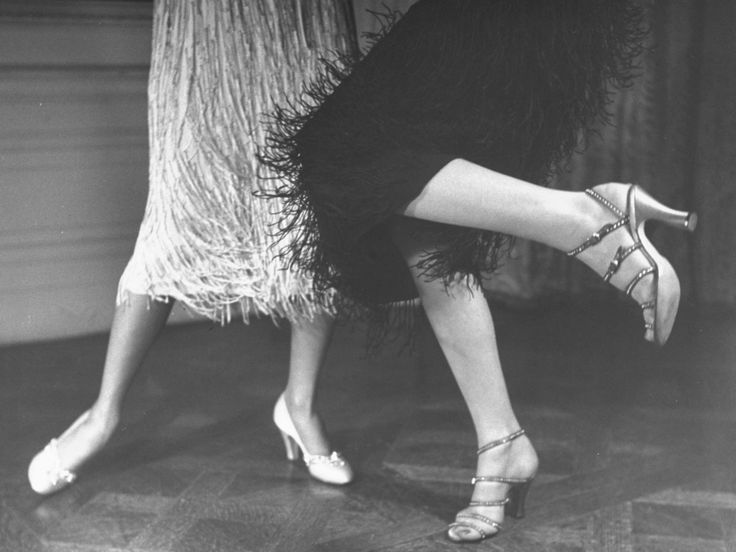 nine0007 BATTEMENT TENDU [batman tandu] - the movement of the leg, which is retracted to the toe forward, backward or to the side with a sliding motion. In modern jazz dance, it is also performed in parallel positions.
nine0007 BATTEMENT TENDU [batman tandu] - the movement of the leg, which is retracted to the toe forward, backward or to the side with a sliding motion. In modern jazz dance, it is also performed in parallel positions.
BRUCH [brush] - sliding or smearing the whole foot on the floor before opening the leg into the air or when closing into position.
CONTRACTION [contraction] - compression, reduction of the volume of the body and rounding of the spine, begins in the center of the pelvis, gradually capturing the entire spine, performed on exhalation. nine0007 CORKSCREW TURN - 'corkscrew' turns, in which the performer raises or lowers the level of rotation.
COUPE [coupe] - a quick substitution of one leg for another, serving as an impetus for a jump or other movement.
CURVE [curf] - bending the upper part of the spine (up to the 'solar plexus') forward or to the side.
DEEP BODY BEND [deep body band] - lean the torso forward below 90°, keeping the straight line of the torso and arms.
DEEP CONTRACTION [deep contraction] - a strong compression in the center of the body, in which all joints participate, i.e. this movement includes arms, legs and head. nine0007 DEGAGE [degage] - transferring the weight of the body from one leg to another in the second position (right, left) and in the fourth position of the legs (forward, backward), can be performed both with demi-plie and with extended legs. Synonym for shift.
DEMI-PLIE [demi-plie] - semi-squatting, in which the heels do not come off the floor.
DEMIROND [demi rond] - a semicircle with the toe of the foot on the floor forward and to the side, or back and to the side.
DROP [drop] - falling of a relaxed torso forward or to the side.
EN DEDANS [an dedan] - the direction of movement or turn towards oneself, inward. nine0007 EN DEHORS [an deor] - the direction of movement or turn from oneself or outward.
ECARTE [ekarte] - a pose of classical dance (a la seconde), turned diagonally forward or backward, the body is slightly deviated from the raised leg.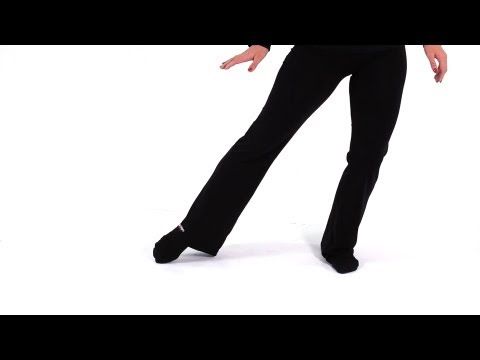
EPAULMENT [epolman] - the position of the dancer, turned in 3/4 in bar 8 or bar 2; differs epaulement croise (closed) and epaulement efface (erased, open)
FLAT BACK [flat back] - tilt of the torso forward, to the side (by 90 °), back with a straight back, without bending the torso. nine0007 FLAT STEP [flat step] - a step in which the entire foot is simultaneously placed on the floor.
FLEX [flex] - reduced foot, hand or knees.
FLIK [flick] - a foot stroke on the floor to the supporting leg.
FOUETTE [fuette] - a turn technique in which the performer's body turns to a leg fixed in a certain position (on the floor or in the air).
FROG-POSITION [frog-position] - a sitting position in which the legs bent at the knees touch each other with the feet, the knees should be maximally opened to the sides,
GLISSADE [glissade] - ground sliding jump without leaving the floor moving right-left or forward-backward.
GRAND BATTEMENT [grand batman] - throwing a leg 90 ° and higher forward, backward or to the side.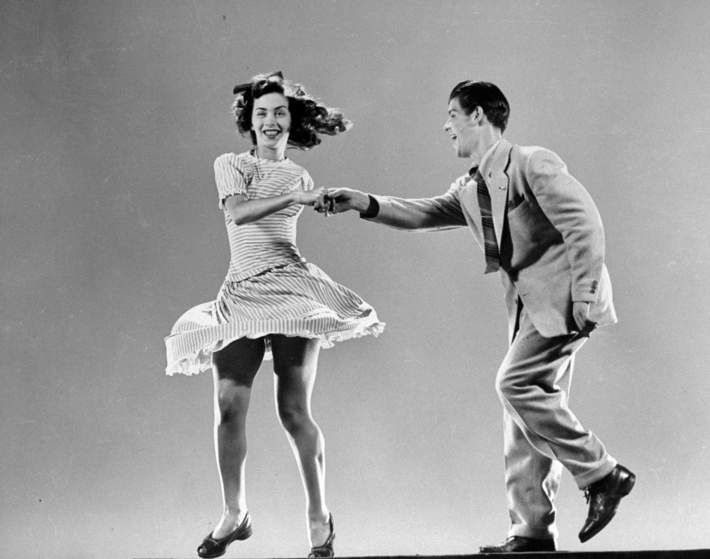
GRAND JETE [grand jet] - jump from one foot to the other moving forward, backward or sideways. The legs open up to the maximum and take the position of 'split' in the air.
GRAND PLIE [gran plie] - full squat.
HIGH RELEASE [high release] - high expansion, a movement consisting of lifting the chest with a slight backward bend. nine0007 HINGE [hinch] - the position of the dancer, in which the straight, without bends, the torso leans back to the maximum distance, the knees are bent, the feet are on half-toes,
HIP LIFT [hip lift] - lifting the hip up.
NOR [hop] - step-jump, 'working' leg is usually in the position 'near the knee'.
JACK KNIFE [jackknife] - body position in which the torso leans forward, the back is straight, resting on the hands, the knees are extended, the legs are in the second parallel position, the heels do not come off the floor.
JAZZ HAND [jazz hand] - the position of the hand, in which the fingers are tense and spread apart.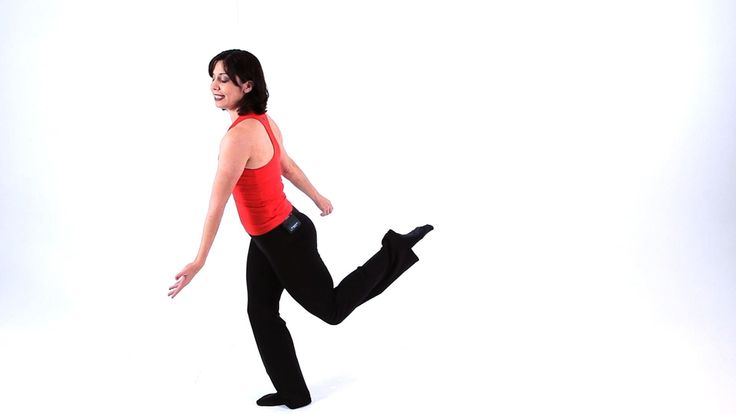 nine0007 JELLY ROLL [jelly roll] - a pelvis movement, consisting of a small muscle contraction with a simultaneous slight turn of the pelvis to the right and left (synonymous with a pelvis shake.)
nine0007 JELLY ROLL [jelly roll] - a pelvis movement, consisting of a small muscle contraction with a simultaneous slight turn of the pelvis to the right and left (synonymous with a pelvis shake.)
JERK-POSITION [jerk position] - a position of the hands in which the elbows are retracted behind the chest, the forearms are parallel to the floor.
JUMP [jump] - jump on two legs.
KICK [kick] - throw the leg forward or to the side by 45 ° or 90 ° through the developpe take-out,
LAY OUT [lay out] - a position in which the leg is open at 90° to the side or back, and the torso form one straight line.
LEAP [liip] - a jump from one foot to another moving forward or to the side.
LOCOMOTOR [locomotor] - a circular movement of arms bent at the elbows along the torso.
LOW BACK [low back] - rounding of the spine in the lumbar-thoracic region.
PAS BALANCE [pa balance] - pa, consisting of a combination of tombe and pas de poigree. It is performed with the advancement from side to side, less often - back and forth.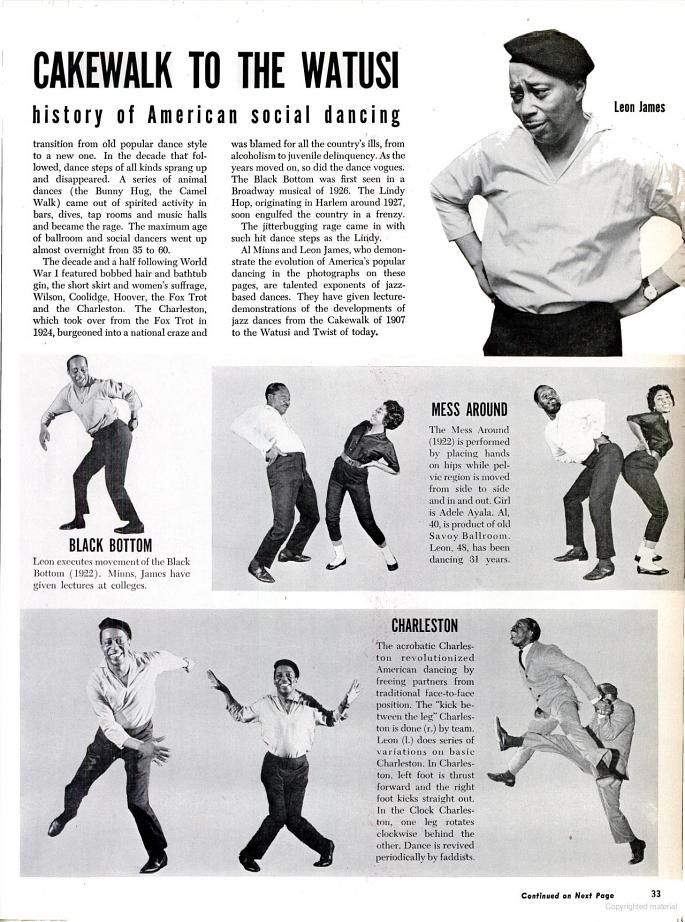
PAS CHASSE [pa chasse] - an auxiliary jump with advancement in all directions, during which one leg 'catches up' with the other at the highest point of the jump. nine0007 PAS DE BOURREE [pas de bourree] - an auxiliary dance step, consisting of alternating steps from one foot to the other, ending in demi-plle. Synonym for step pas de bourree. In modern jazz dance, the position of sur le cou-de-pied is not fixed during pas de bourree.
PAS DE CHAT [pas de sha] - a jump, a cat's limiting jump. Legs bent at the knees are thrown back.
PAS FAILLJ [pa fail] - a connecting step, consisting of passing the free leg through the passing demlplie in I position forward or backward, then the weight of the body is transferred to the leg with some deviation from the vertical axis. nine0007 PASSE [passe] - a passing movement, which is a link when moving the leg from one position to another, can be performed in the first position on the floor (passepar terre), or at 45 ° or 90 °.
PIQUE [peak] - a light injection with the fingertips of the 'working' leg on the floor and lifting the leg to a given height.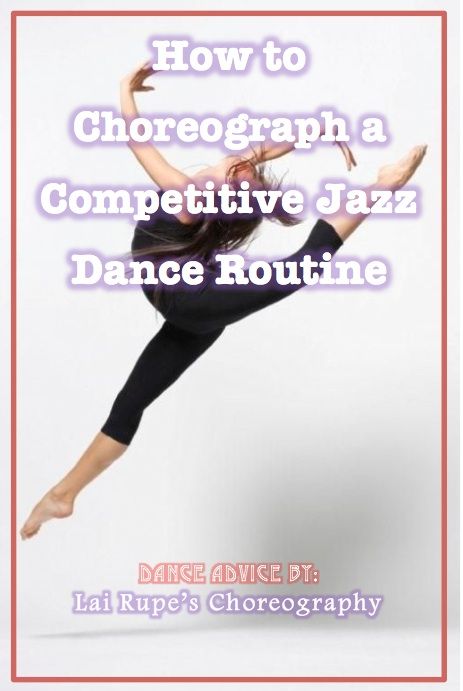
PIROUTTE [pirouette] - rotation of the performer on one leg en dehors or en dedans, the second leg in the position sur le cou-de-pied.
PLIE RELEVE [plie releve] - the position of the legs on half-toes with bent knees. nine0007 POINT [point] - the extended position of the foot.
PRANCE [price] - movement for the development of foot mobility, consisting of a quick change of position 'half-lalse' and point.
PREPARATION [preparation] - a preparatory movement performed before the start of the exercise.
PRESS-POSITION [press position] - the position of the hands, in which the arms bent at the elbows with the palms touch the hips in front or side.
RELEASE [release] - expansion of the volume of the body, which occurs on inspiration.
RELEVE [relevé] - lifting on half-fingers. nine0007 RENVERSE [ranverse] - a sharp bending of the body, mainly from the atitude croise position, accompanied by pas de bouree en tournant.
ROLL DOWN [roll down] - a downward-forward spiral tilt, starting from the head.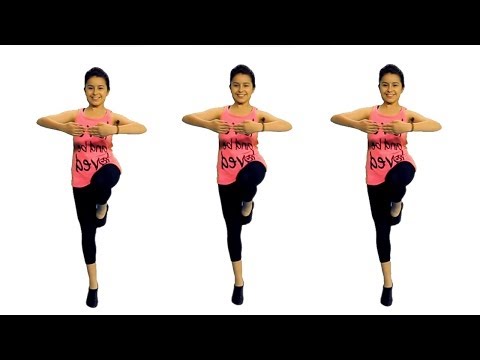
ROLL UP [roll an] - a reverse movement associated with a gradual unwinding and straightening of the torso to its original position.
ROND DE JAM BE PAR TERRE [ron de jamb par terre] - a circle with an outstretched leg, touching the floor with your fingers.
ROVD DE JAM BE EN L 'AIR [ron de jamb anler] - circular movement of the lower leg (ankle) with a fixed hip, set aside to a height of 45 ° or 90°.
SAUTE [saute] - classical dance jump from two legs to two legs in I, II, IV and V positions.
SHIMMI [shimmy] - a spiral, twisting movement of the pelvis to the right and left,
SIDE STRETCH [side stretch] - lateral stretching of the torso, tilting the torso to the right or left.
SISSON OUVERTE [sisson overt] - a jump with flying forward, backward or to the side, upon landing one leg remains open in the air at a given height or in a given position.
SOUTENU EN TQURNANT [sutenu en turnan] - a turn on two legs, starting with the retraction of the 'working * leg into the fifth position.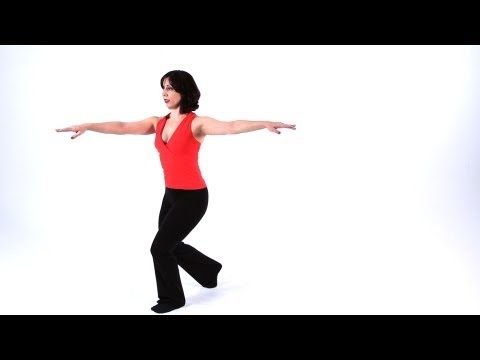 nine0007 SQUARE [skvea] - four steps in a square: forward-to-side-back-to-side.
nine0007 SQUARE [skvea] - four steps in a square: forward-to-side-back-to-side.
STEP BALL CHANGE [step ball change] - a connecting step, consisting of a step to the side or forward and two steps on half-toes (synonymous with step pa de hour its
SUNDARI [zundari] - head movement, which consists in shifting the cervical vertebrae to the right and left and back and forth
SURLE COU-DE-PIED [sur le cou-de-pied] - the position of the extended foot of the 'working' leg on the ankle of the supporting leg in front or behind
SWING - swinging with any part of the body (arm, leg, head, torso) in a special jazz rhythm.
THRUST [frast] - a sharp jerk of the chest or pelvis forward, sideways or backward.
TILT [tilt] - angle, posture in which the torso deviates to the side or forward from the vertical position, the 'working' leg can be open in the opposite direction by 90 ° and more.
TOMBE [tombe] - fall, transfer of the weight of the body to the open leg forward, to the side or back on the demi-plie,
TOUCH - side step or step on the half-toes without transferring the weight of the body.